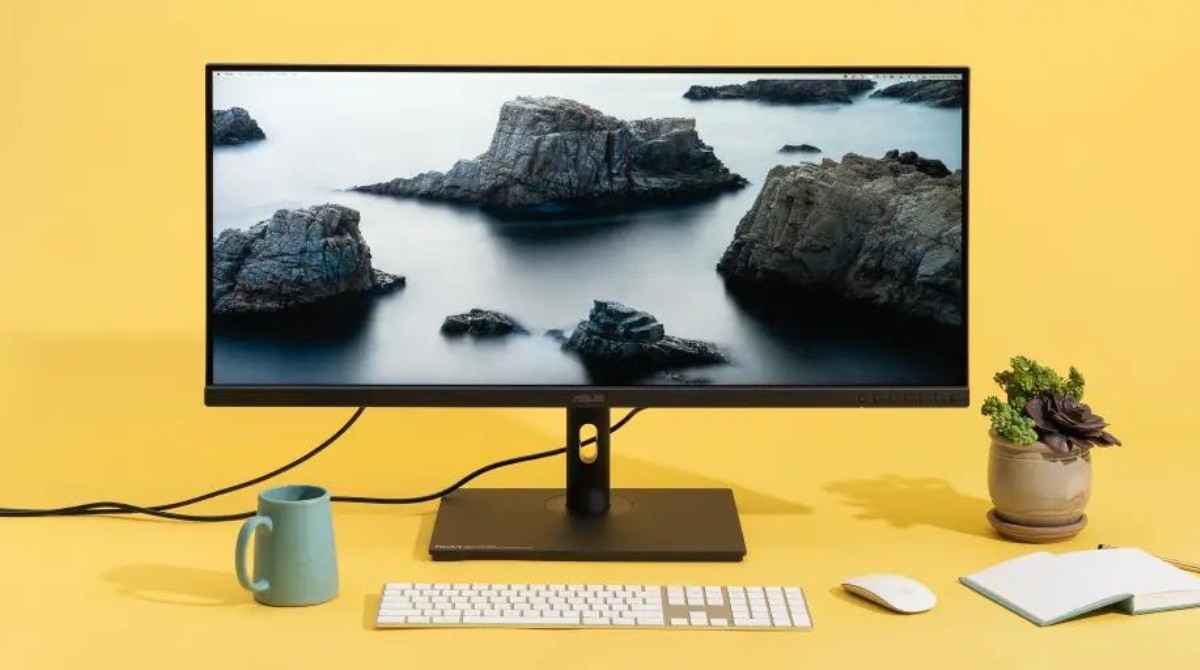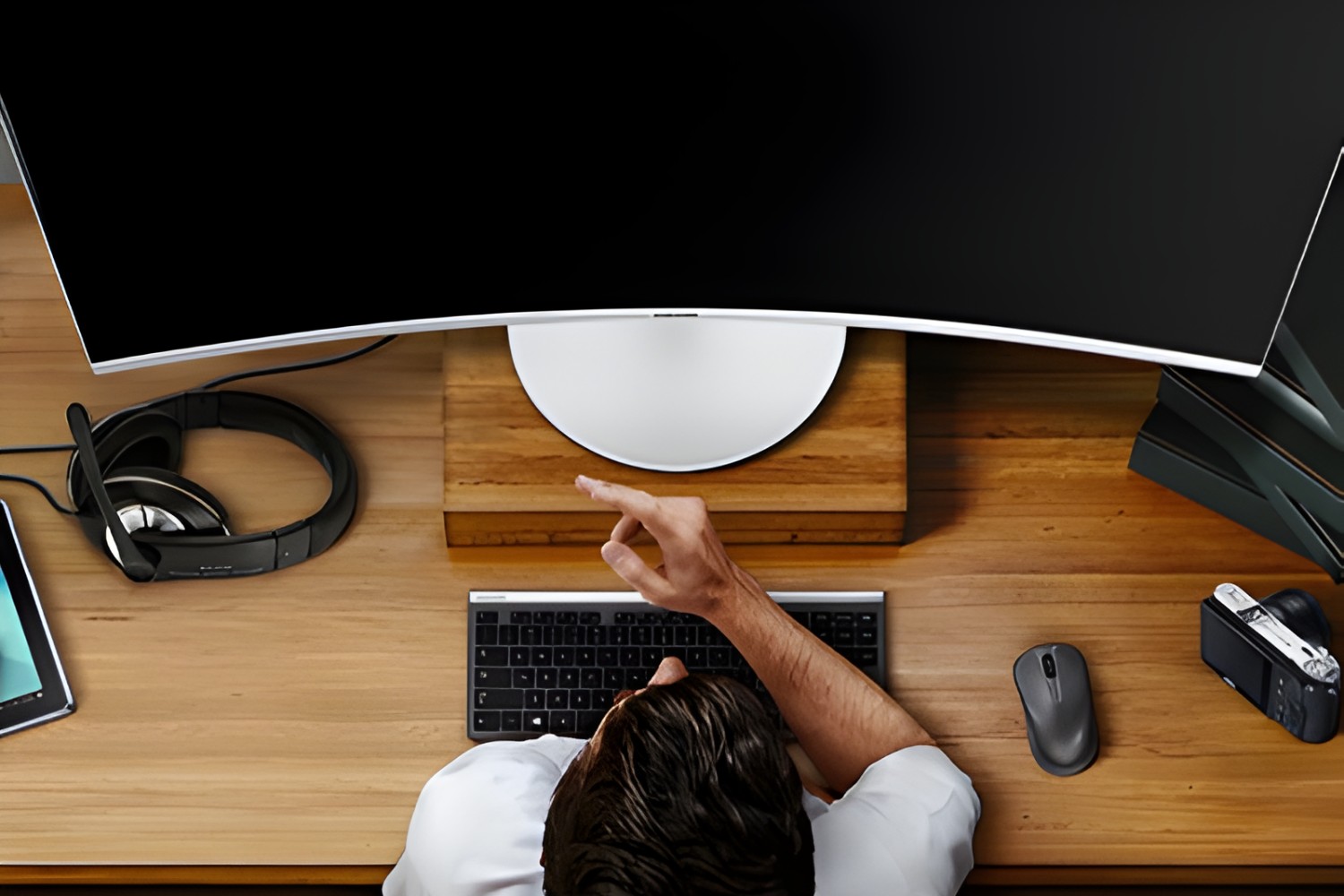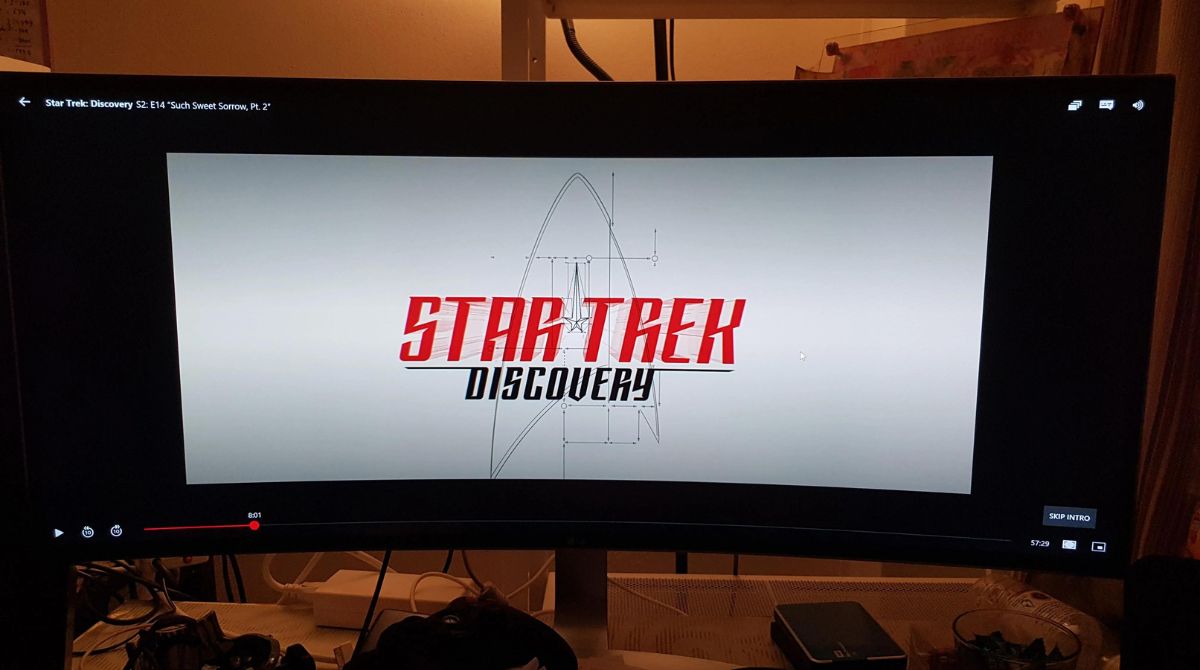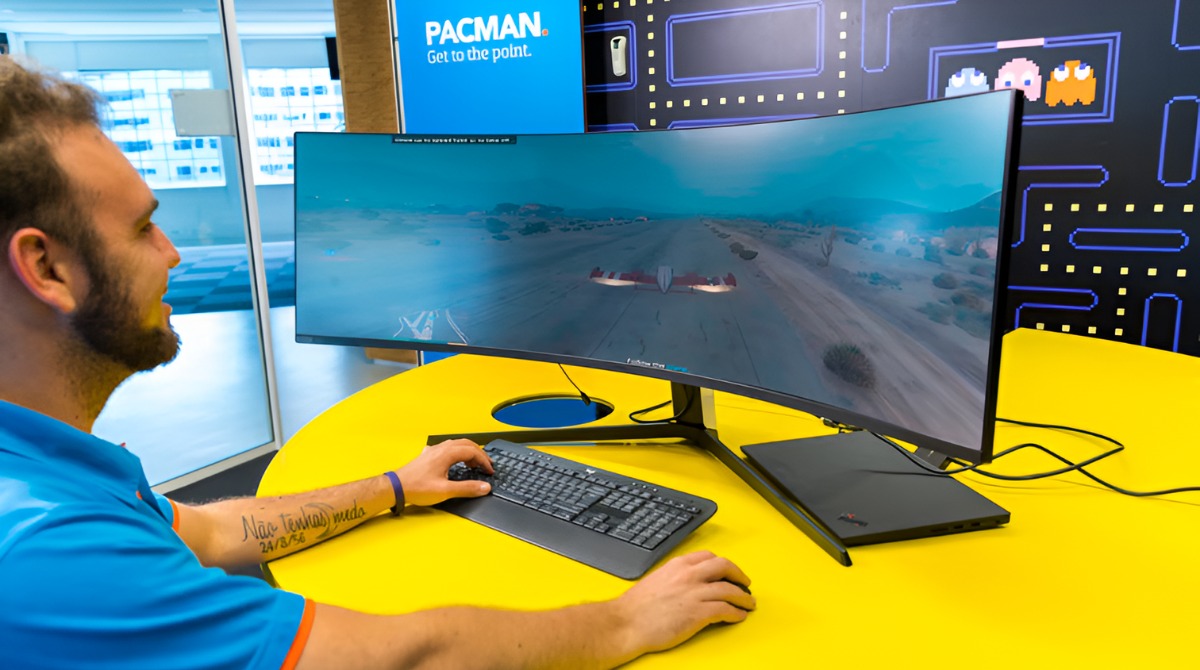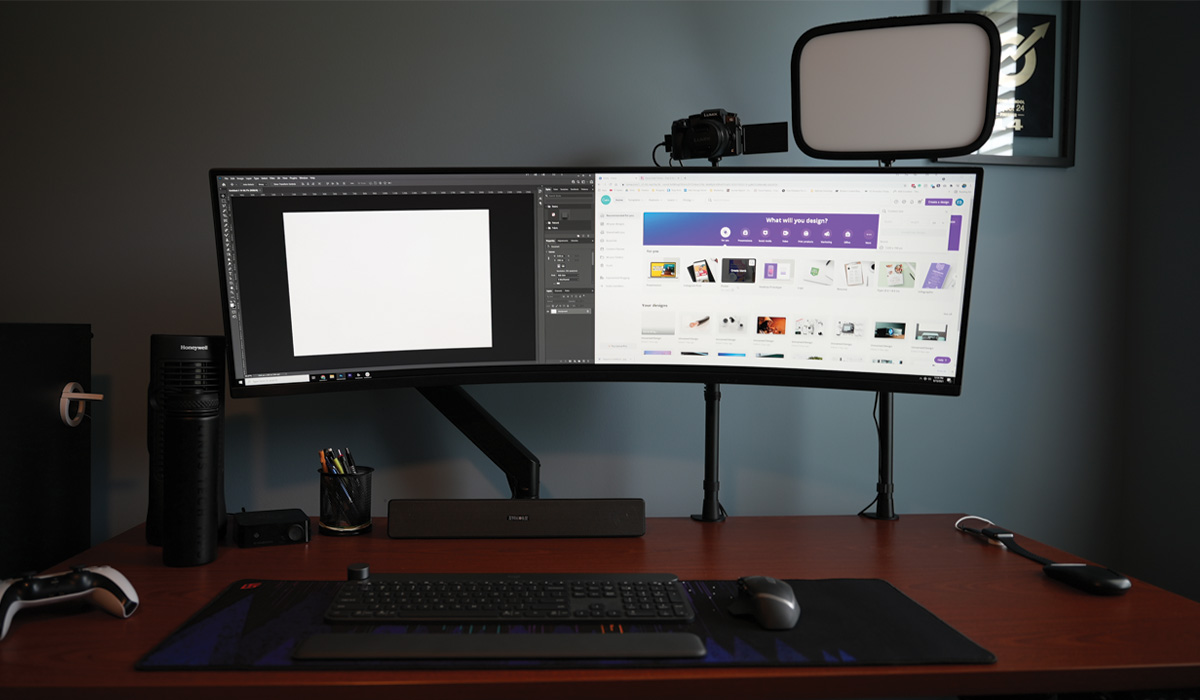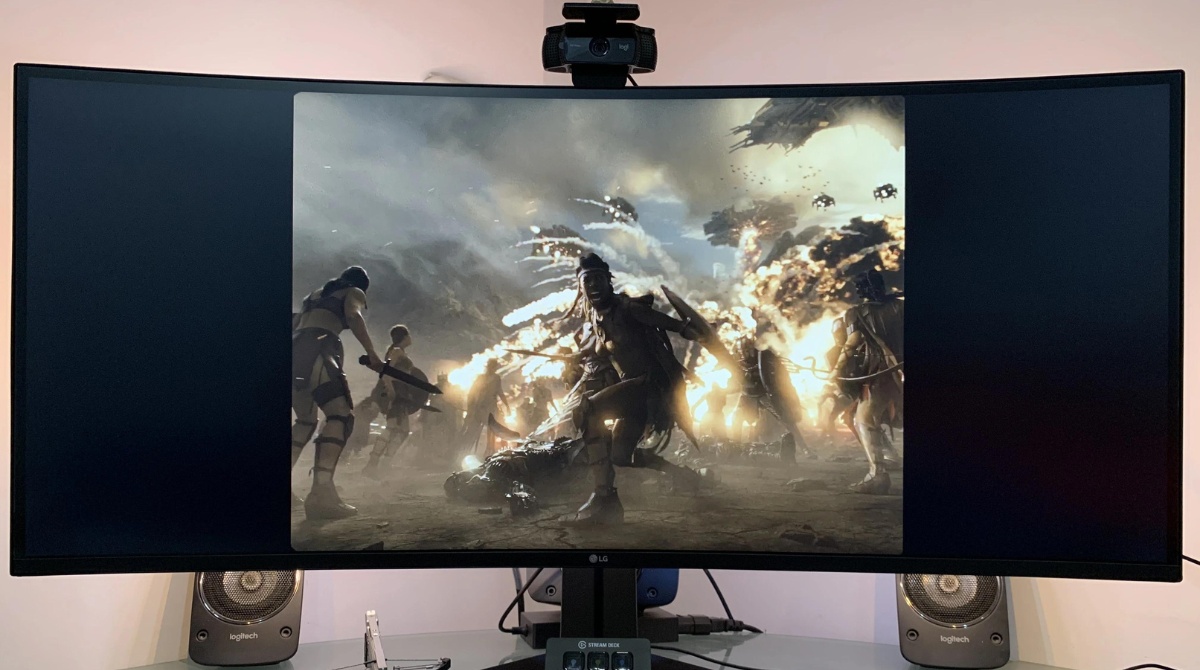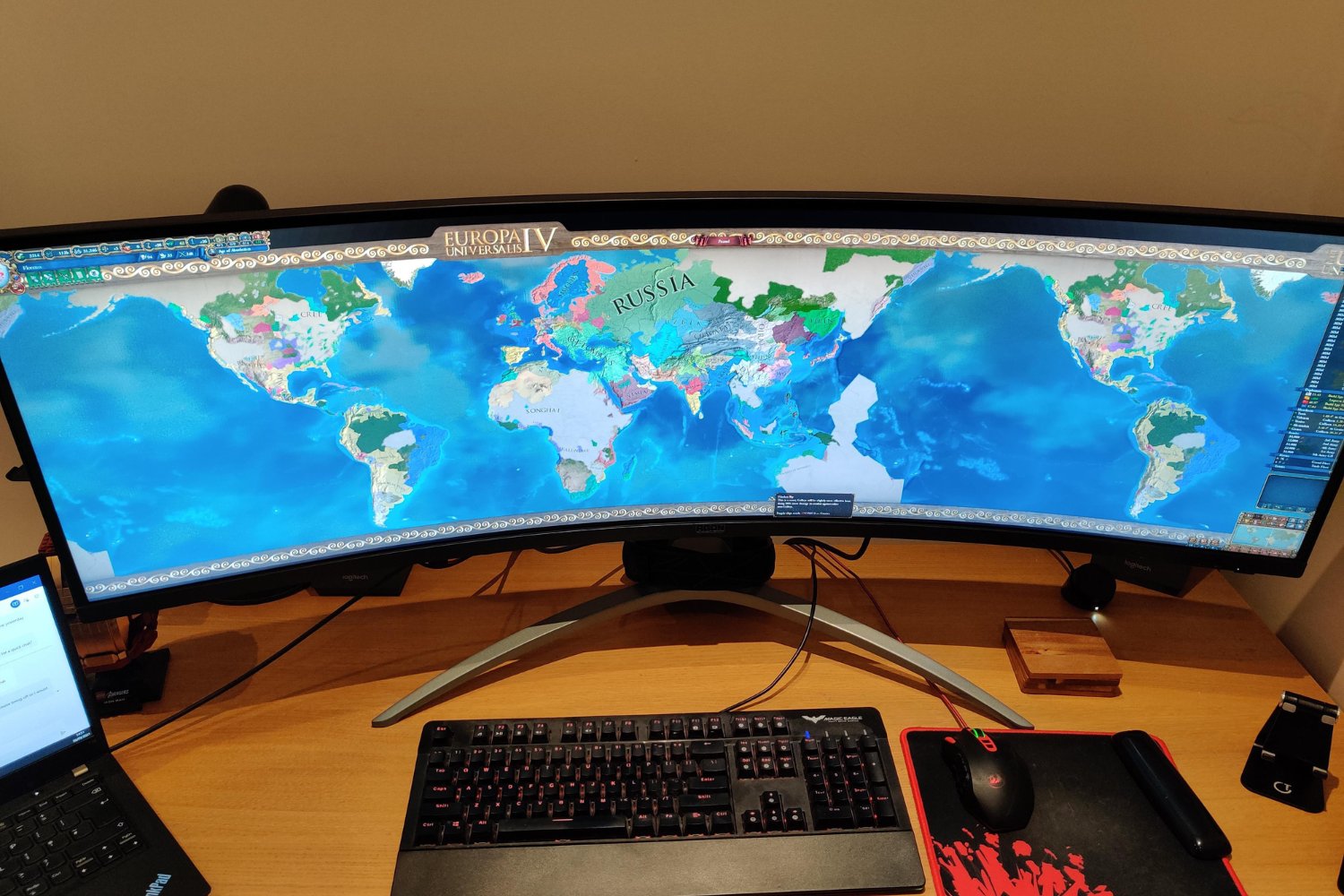Introduction
Ultrawide monitors offer an immersive and visually stunning experience, providing users with a wider field of view and unprecedented multitasking capabilities. However, if you are using a PC with Windows 7, you may encounter issues where the native resolution of the ultrawide monitor is not recognized. This can be frustrating, as it prevents you from fully enjoying the benefits of your new monitor.
An ultrawide monitor is a widescreen display with an aspect ratio of 21:9 or wider, compared to the traditional 16:9 aspect ratio of standard monitors. This extra width allows for more content to be displayed side by side, which is particularly useful for tasks such as video editing, gaming, and multitasking.
The native resolution of an ultrawide monitor refers to the maximum resolution at which the display is designed to operate. This resolution provides the best image quality and sharpness. However, on Windows 7, some users may find that their PC does not recognize the native resolution of their ultrawide monitor, resulting in stretched or distorted images.
There are several factors that can contribute to this issue. One common reason is the lack of proper driver support. Windows 7 may not have the necessary drivers to fully recognize and utilize the capabilities of newer ultrawide monitors. Additionally, compatibility issues with the graphics card or incorrect BIOS settings can also result in the PC not recognizing the native resolution.
In this article, we will explore the reasons why your PC may not recognize the native resolution of your ultrawide monitor when using Windows 7. We will also discuss possible troubleshooting steps to help you overcome this issue and fully enjoy the immersive experience that an ultrawide monitor can provide.
What is an Ultrawide Monitor?
An ultrawide monitor is a type of display that offers a wider aspect ratio compared to traditional monitors. While standard monitors typically have a 16:9 aspect ratio, ultrawide monitors sport an aspect ratio of 21:9 or even wider, providing a significantly broader viewing area.
This increased width allows for a more immersive visual experience as it replicates the field of view similar to that of a movie theater screen. With an ultrawide monitor, you can enjoy enhanced cinematic experiences, whether it’s watching movies, playing games, or even editing videos.
One of the remarkable advantages of an ultrawide monitor is the ability to display multiple windows side by side without the need for separate monitors. The additional horizontal screen space enables better multitasking, allowing you to have multiple applications and documents open simultaneously, making it ideal for professionals, content creators, and gamers.
The ultra-wide format also offers a broader perspective, providing an advantage in various activities. In gaming, an ultrawide monitor can enhance the immersive experience by expanding the peripheral view, giving gamers a wider field of vision and presenting more game details. This can be especially beneficial for games that require heightened situational awareness, such as racing or first-person shooter games.
Furthermore, professionals in fields such as graphic design, video editing, and programming can benefit from the increased screen real estate. Ultrawide monitors allow designers to have a wider canvas to work with, while programmers can view more lines of code simultaneously, increasing productivity and efficiency.
It’s important to note that not all content is optimized for the ultrawide aspect ratio. Some older applications and games may not support or properly display on an ultrawide monitor, resulting in black bars on the sides of the screen. However, many newer applications and games are becoming more compatible with ultrawide displays, maximizing the visual experience.
In summary, an ultrawide monitor offers a wider and more immersive viewing experience, enabling improved multitasking, enhanced gaming visuals, and increased productivity for various professional applications. With the continuous advancements in display technology, ultrawide monitors are becoming increasingly popular among users who seek a more immersive and efficient computing experience.
Native Resolution
The native resolution of a monitor refers to the maximum resolution at which the display is designed to operate. It is the optimal setting that provides the best image quality, sharpness, and clarity. When an ultrawide monitor is set to its native resolution, it ensures that the content displayed is pixel-perfect and accurately represents the intended visuals.
Typically, an ultrawide monitor has a native resolution of 2560×1080 or 3440×1440 pixels, offering an expansive horizontal screen space. This widescreen aspect ratio allows for a more immersive viewing experience and a greater field of view compared to standard monitors.
When a PC recognizes and utilizes the native resolution of an ultrawide monitor, the content displayed appears crisp and well-proportioned. However, if the native resolution is not properly recognized, it can result in stretched or distorted images, making the viewing experience less than optimal.
In some cases, Windows 7 may not have the necessary drivers to fully support the native resolution of newer ultrawide monitors. This can occur if the monitor’s manufacturer has not provided specific drivers for Windows 7 compatibility or if the operating system lacks the built-in support for the monitor’s resolution.
Another factor that can affect the recognition of the native resolution is the graphics card. Older or incompatible graphics cards may not have the capability to output the required resolution for an ultrawide monitor. This can lead to lower resolution settings being used, resulting in a subpar visual experience.
It’s worth noting that setting the display resolution higher than the native resolution can also result in reduction in image quality. While the screen may appear larger, the images can become blurry or pixelated, defeating the purpose of having an ultrawide monitor.
To ensure that the PC recognizes and utilizes the native resolution of an ultrawide monitor on Windows 7, it is important to have the proper drivers installed. Checking the monitor manufacturer’s website for the latest drivers specifically designed for Windows 7 compatibility is recommended. Updating the graphics card drivers to the latest version available can also help ensure better recognition and utilization of the monitor’s native resolution.
In the next sections, we will explore additional troubleshooting steps that can be taken to address the issue of Windows 7 not recognizing the native resolution of an ultrawide monitor.
Compatibility with Windows 7
While Windows 7 is a widely used operating system, it may not always have the necessary built-in support for newer hardware, such as ultrawide monitors. Compatibility issues between Windows 7 and ultrawide monitors can arise due to various factors, including outdated drivers, lack of resolution support, and limited compatibility with newer display technologies.
One common issue faced by Windows 7 users is the inability to display the native resolution of an ultrawide monitor. This can be due to the operating system not recognizing the specific resolution required by the monitor. In some cases, Windows 7 might default to lower resolution settings, resulting in a stretched or pixelated display.
To address compatibility issues with Windows 7 and ultrawide monitors, it is recommended to first check for any available updates or patches for the operating system. Installing the latest service packs and updates for Windows 7 can help ensure better compatibility with newer hardware and resolve issues related to resolution recognition.
Another important step is to verify that the graphics card being used is compatible with both Windows 7 and the native resolution of the ultrawide monitor. Older graphics cards may not have the capability to output the required resolution, resulting in compatibility issues. In such cases, upgrading the graphics card to a newer model that supports the native resolution of the ultrawide monitor can resolve the problem.
It is also worth mentioning that some ultrawide monitors require specific drivers or software applications to properly function with Windows 7. Checking the monitor manufacturer’s website for any available drivers or software updates specific to Windows 7 can be beneficial. Installing these drivers or software can help enhance compatibility and ensure that Windows 7 recognizes the native resolution of the ultrawide monitor.
In some instances, a BIOS update may be necessary to enable proper communication between the monitor and the PC. The BIOS (Basic Input/Output System) is responsible for configuring hardware components during the boot process. Updating the BIOS to the latest version available can help address compatibility issues and improve recognition of the native resolution of the ultrawide monitor.
It is important to note that while efforts can be made to improve compatibility with Windows 7, there may still be limitations in terms of resolution support or functionality. Upgrading to a newer operating system, such as Windows 10, can provide better compatibility with modern hardware and a smoother user experience.
Overall, ensuring the compatibility of an ultrawide monitor with Windows 7 involves updating drivers, checking for software updates, verifying graphics card compatibility, and, if necessary, updating the BIOS. These steps can help overcome compatibility issues and allow Windows 7 to recognize and utilize the native resolution of the ultrawide monitor effectively.
Driver Issues
When using an ultrawide monitor with Windows 7, one of the common causes for the PC not recognizing the native resolution is driver-related issues. Drivers are software components that enable communication between the operating system and hardware devices, such as the monitor, graphics card, and motherboard.
In some cases, the default drivers provided by Windows 7 may not have the necessary capabilities to fully support the native resolution of the ultrawide monitor. This can result in the PC using lower resolution settings or failing to recognize the monitor’s optimal display settings.
To address driver-related issues, it is important to ensure that the appropriate drivers are installed for both the monitor and the graphics card. Most monitor manufacturers provide specific drivers for their devices, which include enhanced compatibility and resolution support for various operating systems, including Windows 7.
Checking the manufacturer’s website for the latest drivers for your specific ultrawide monitor model is recommended. Downloading and installing these drivers can help resolve compatibility issues and improve the recognition of the monitor’s native resolution by Windows 7.
Similarly, it is essential to ensure that the graphics card drivers are up-to-date. Graphics card manufacturers frequently release driver updates to provide better performance, bug fixes, and support for new technologies. Updating the graphics card drivers can help ensure that the PC recognizes and utilizes the native resolution of the ultrawide monitor effectively.
If you have already installed the latest drivers for your monitor and graphics card, but the issue persists, you can try uninstalling and reinstalling the drivers. This can help resolve any potential conflicts or errors that may have occurred during the initial installation.
In some cases, using third-party driver update software can be helpful in automatically scanning for outdated or missing drivers on your system. These tools can simplify the process of updating drivers, ensuring that the necessary updates are installed for the monitor, graphics card, and other hardware components.
However, it is important to be cautious when using third-party driver update software. Choose reputable and trusted software to avoid downloading potentially harmful or unreliable drivers.
In summary, driver issues can often be the underlying cause of Windows 7 not recognizing the native resolution of an ultrawide monitor. Updating the drivers, both for the monitor and the graphics card, can help overcome compatibility problems and ensure that the PC properly recognizes the monitor’s optimal display settings.
Graphics Card Compatibility
When encountering issues with an ultrawide monitor’s native resolution not being recognized on Windows 7, one possible culprit is the compatibility between the graphics card and the monitor. Graphics cards are responsible for rendering graphics and transmitting them to the display, and not all graphics cards are capable of supporting the higher resolutions required by ultrawide monitors.
If your graphics card is not compatible with the native resolution of the ultrawide monitor, it may default to using a lower resolution that can result in stretched or pixelated images. In some cases, the graphics card may not even display the ultrawide resolution as an available option.
To determine the compatibility of your graphics card with an ultrawide monitor, it is essential to check the specifications and capabilities of both the graphics card and the monitor. Check the documentation or the manufacturer’s website for the maximum supported resolution of your graphics card. Additionally, verify that the graphics card supports the widescreen aspect ratio of the ultrawide monitor, typically 21:9 or wider.
If your graphics card is not compatible with the ultrawide monitor, you have a few options to consider. One solution is to upgrade the graphics card to a model that supports the required resolution and aspect ratio. This can be a worthwhile investment to ensure optimal display performance and compatibility with your ultrawide monitor.
Before purchasing a new graphics card, it is recommended to research and check for compatibility with both Windows 7 and the native resolution of your ultrawide monitor. Review user reviews and forums to gather information from others who may have already tested similar setups.
Another alternative is to connect the ultrawide monitor to a different computer or laptop that has a compatible graphics card. This can help confirm whether the issue lies with the graphics card or with other factors such as operating system compatibility or software settings on the original PC.
If upgrading the graphics card is not financially feasible or practical, you may consider using software solutions or display settings to optimize the resolution on your current graphics card. By selecting a resolution closer to the native resolution of the ultrawide monitor, you can achieve a better display quality, although it may not be as optimal as using a compatible graphics card.
In summary, graphics card compatibility plays a crucial role in ensuring that Windows 7 recognizes and supports the native resolution of an ultrawide monitor. Checking the specifications of your graphics card, considering an upgrade if necessary, and exploring alternative display settings are steps that can help resolve compatibility issues and enhance the visual experience on your ultrawide monitor.
BIOS Settings
When encountering issues with Windows 7 not recognizing the native resolution of an ultrawide monitor, it is worth checking the BIOS (Basic Input/Output System) settings of your computer. The BIOS is firmware that initializes hardware during the boot process and provides configuration options for various system components, including the display.
In some cases, incorrect or outdated BIOS settings can interfere with the proper recognition and utilization of the native resolution of an ultrawide monitor. Adjusting these settings can help resolve compatibility issues and ensure that the monitor’s optimal display settings are recognized by Windows 7.
To access the BIOS settings, restart your computer and look for a specific key to press during the startup process. This key varies depending on the manufacturer, but common keys to access the BIOS settings include F2, F10, or Delete. Once in the BIOS, you will have access to various configuration options.
First, check if there is an option related to display settings or resolution in the BIOS. This option may be located under different sections, such as “Advanced Settings” or “Integrated Peripherals.” Ensure that the option is set to “Auto” or “Optimal” to allow the system to detect and configure the display settings automatically.
If you do not find any specific display-related settings, it is recommended to reset the BIOS settings to their default values. This can often resolve any conflicting settings or misconfigurations that may be affecting the recognition of the ultrawide monitor’s native resolution.
Additionally, updating the BIOS to the latest version available can help address compatibility issues. Visit the manufacturer’s website to check if there are any BIOS updates specifically related to display or resolution support. Follow the instructions provided by the manufacturer to safely update the BIOS.
It’s important to note that adjusting BIOS settings can have a significant impact on the functionality and stability of your computer. Incorrect changes to the BIOS settings can lead to system instability or even prevent the computer from booting. Therefore, it is crucial to exercise caution and consult the manufacturer’s documentation or seek professional assistance if you are unfamiliar with BIOS settings.
In summary, incorrect BIOS settings can sometimes prevent Windows 7 from recognizing the native resolution of an ultrawide monitor. Accessing the BIOS settings, checking for display-related options, resetting to default values, and updating the BIOS can help resolve compatibility issues and ensure that the monitor’s optimal display settings are recognized and utilized by Windows 7.
Troubleshooting Steps
If you’re experiencing issues with Windows 7 not recognizing the native resolution of your ultrawide monitor, there are several troubleshooting steps you can take to address the problem. Below are some possible solutions:
- Check for Firmware or Driver Updates: Visit the manufacturer’s website for your monitor and graphics card to check for any available firmware or driver updates specifically designed for Windows 7 compatibility. Installing the latest updates can help resolve compatibility issues and improve resolution recognition.
- Verify Monitor Connections: Ensure that the ultrawide monitor is properly connected to your PC. Check both ends of the cable to make sure they are securely plugged in. If possible, try a different cable or connection port on your graphics card to eliminate any potential connectivity issues.
- Reset Display Settings: In Windows 7, right-click on the desktop and select “Screen resolution.” From there, choose the recommended resolution for your ultrawide monitor. If the native resolution is not available, try selecting a resolution that closely matches it. Apply the settings and check if the monitor’s native resolution is now recognized.
- Use Custom Resolution Utility: If the native resolution is still not recognized, you can try using third-party software like Custom Resolution Utility (CRU). CRU allows you to add custom resolutions and timings for your monitor. This can help override the incorrect resolution detection and enable Windows 7 to recognize and use the native resolution of your ultrawide monitor.
- Try a Different Operating System: If all else fails, consider trying a different operating system, such as Windows 10. Newer operating systems often have better native support for ultrawide monitors, which can significantly improve compatibility and resolution recognition.
- Consult the Manufacturer or Technical Support: If none of the troubleshooting steps mentioned above work, it may be helpful to reach out to the monitor or graphics card manufacturer’s technical support. They can provide more specific guidance and assistance tailored to your specific hardware configuration.
Remember to back up your important files and create a system restore point before making any significant changes to your computer’s settings. This will allow you to revert back if any issues arise during the troubleshooting process.
By following these troubleshooting steps, you can increase the chances of resolving the issue with Windows 7 not recognizing the native resolution of your ultrawide monitor and enjoy the optimal display experience it has to offer.
Conclusion
When using an ultrawide monitor with Windows 7, it can be frustrating to encounter issues where the native resolution is not recognized. However, by understanding the potential causes and implementing the appropriate troubleshooting steps, you can overcome these challenges and fully enjoy the immersive experience that an ultrawide monitor provides.
We explored various factors that can contribute to Windows 7 not recognizing the native resolution of an ultrawide monitor. These include driver issues, compatibility with the operating system and graphics card, BIOS settings, and other potential software-related factors.
By ensuring that you have the latest drivers installed for both the monitor and the graphics card, you can enhance compatibility and improve resolution recognition. Checking for updates specific to Windows 7 compatibility and following manufacturer recommendations will ensure optimal performance.
In some cases, graphics card compatibility may need to be addressed. Upgrading to a graphics card that supports the ultrawide monitor’s native resolution can greatly enhance compatibility and provide a smoother visual experience.
Checking and adjusting the BIOS settings, such as resetting to default values or updating the BIOS, can resolve conflicts and improve recognition of the ultrawide monitor’s native resolution by Windows 7.
If the issue persists, troubleshooting steps like verifying monitor connections, resetting display settings, using third-party software for custom resolutions, or considering a different operating system like Windows 10 can help address the problem.
Remember to consult with the manufacturer’s technical support if needed, as they can provide further guidance and assistance tailored to your specific hardware configuration.
By following these troubleshooting steps and taking proactive measures, you can overcome compatibility issues and ensure that Windows 7 recognizes and utilizes the native resolution of your ultrawide monitor effectively. With the optimal resolution in place, you can fully immerse yourself in your favorite games, enjoy enhanced productivity, and appreciate the immersive visual experience that an ultrawide monitor offers.







